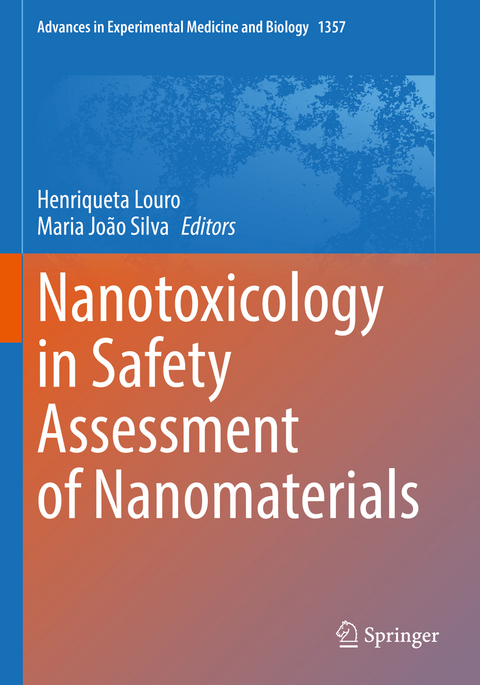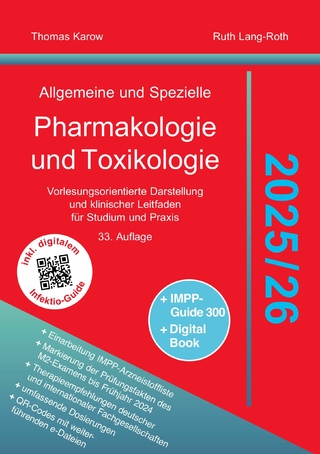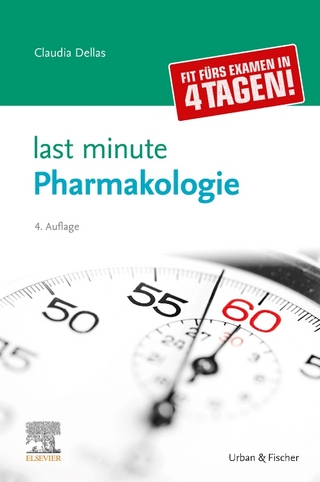
Nanotoxicology in Safety Assessment of Nanomaterials
Springer International Publishing (Verlag)
978-3-030-88073-6 (ISBN)
Since its advent, nanotechnologies are considered key enabling technologies that take advantage of a wide array of nanomaterials (NMs) for biomedical and industrial applications generating significant societal and economic benefits. However, such innovation increases human exposure to these substances through inhalation, ingestion or dermal contact raising public health concerns. Furthermore, the NMs' specific physicochemical properties, that confer them unique beneficial characteristics, can also elicit nano-bio interactions leading to toxicity and concerns for public health. In addition, such properties can be affected by the surrounding matrix, particularly when incorporated in complex matrices such as food products, leading to secondary features potentially more relevant than primary characteristics for determining their toxicological outcome. These nano specific issues raise the question of whether the NMs may produce adverse outcomes that are not accounted for when usingconventional toxicological approaches to assess their safety.
Such uncertainties about the safety of NMs for human health and the environment may hamper a faster and more widespread exploration of their potentials. In response, the NMs definition has evolved, and nanotoxicology has developed towards new and more integrative approach methods to support regulatory and policy actions.
This book provides a perspective on recent developments in the synthesis, application, and characterization of NMs and the related nanotechnologies, focusing on nanotoxicology for their accurate safety assessment early in the product development stage. The use of complex in vitro models, including multicellular systems and organoids, and "omics-based" approaches, such as transcriptomics or epigenomics, have greatly contributed to an in-depth understanding of the cellular and molecular mechanisms behind some NMs toxicity. Such mechanistic knowledge is equally addressed in this book and has set the basis for a predictive nanotoxicology approach building on adverse outcome pathways. In addition, considering the knowledge provided by the above-mentioned approaches, insights into risk assessment, standardization, and regulation of NMs are also included.
Incorporating adequate nanosafety assessment early in the life-cycle of NMs will allow the implementation of the safe and sustainable-by-design paradigm enabling safety to keep pace with innovation.
Chapters 10 and 15 are available open access under a Creative Commons Attribution 4.0 International License via link.springer.com.
lt;p>Henriqueta Louro is a research scientist at the Research and Development Unit of the Department of Human Genetics of the National Institute of Health Dr. Ricardo Jorge (INSA, Lisbon, Portugal) and an integrated member of the Centre for Toxicogenomics and Human Health (ToxOmics, NOVA Medical School, NOVA University of Lisbon). She is graduated in Biochemistry (Faculty of Sciences, Lisbon University) and holds a Ph.D. in Public Health-Environmental and Occupational Health (Nova University of Lisbon). She is a Specialist in Human Genetics (Portuguese Ministry of Health), lecturer at the Toxicology and Health in the Master Course of Human Biology and Environment at the Faculty of Sciences (Lisbon University) and scientific supervisor of M.Sc. and Ph.D. theses. Her main field of research is genetic toxicology and human biomonitoring, with work published in many international peer-reviewed scientific journals, books and communications in international and national congresses. Presently, she participates in the Human Biomonitoring Initiative (HBM4EU) and is the responsible researcher for nationally funded projects on the nanosafety field. Additionally, she is a member of ISO/CEN Portuguese Technical Commission CT194- Nanotechnologies and of the Portuguese consortium for nanosafety, PtOnano.
Maria João Silva is the principal investigator of the Research Group in Genetic Toxicology at the Department of Human Genetics of the National Institute of Health Dr. Ricardo Jorge (INSA), Lisbon and co-leads the research line on Environmental and Genetic Determinants of Human Disease, Centre for Toxicogenomics and Human Health (ToxOmics), NOVA Medical School, NOVA University of Lisbon). She received her doctoral formation in Genetic Toxicology at INSA after graduation in Pharmaceutical Sciences, holds a specialization in Human Genetics, and is an European Registered Toxicologist. She is also an invited Professor in Master Courses at public and private Universities. Her main research interests comprise human and environmental genotoxicity, nanotoxicology, chemicals and mixtures toxicology, and human biomonitoring. She has been involved in several national and European Projects and currently coordinates the HBM4EU Project's activities at INSA and nationally funded projects on the safety assessment of nanomaterials and nanotechnologies. She is an expert in the OECD Project 4.095, aimed at the development of the Guidance Document on the adaptation of the "In Vitro micronucleus assay (OECD TG 487) for Testing of Manufactured Nanomaterials".
Part I:Nanotechnologies: Synthesis, application and characterization of nanomaterials.- Chapter 1. Challenges in Nanomaterial Characterization - From Definition to Analysis (José Catita).- Chapter 2.Trends in the design and evaluation of polymeric nanocarriers: the in vitro nano-bio interactions (Ana Bettencourt, Lídia Gonçalves).- Chapter 3. LipNanoCar technology - A versatile and scalable technology for the production of lipid nanoparticles(Vera L.R. Esgueira, Clara P.A. Lopes, Ana Catarina A. dos Santos, Fátima C.R.V. Pinto, Silvia A. Sousa, Dragana P.C. de Barros, Jorge H. Leitão, Luis P. Fonseca).- Chapter 4. Dermal delivery of lipid nanoparticles: Effects on skin and assessment of absorption and safety (Fátima Pinto, Luis P. Fonseca, Dragana P.C. de Barros).- Chapter 5. Targeting cancer by using nanoparticles to modulate Rho GTPase signalling (Paulo Matos, Joana F. S. Pereira and Peter Jordan).- Chapter 6. Nanocelluloses: production, characterization and market (Paulo J. T.Ferreira, Ana F. Lourenço).- Part II: Nanotoxicology: concepts and methodologies for toxicity evaluation of the nanomaterials.- Chapter 7. Nanotoxicology assessment and safety aspects of nanocelluloses for 3D bioprinting applications (Gary Chinga-Carrasco, Jennifer Rosendahl, and Julia Catalán).- Chapter 8. New "omics" approaches as a tool to explore mechanistic nanotoxicology (Célia Ventura, Vukosava Torres, Luís Vieira, Bruno Gomes, António Sebastião Rodrigues, José Rueff, Deborah Penque, Maria João Silva).- Chapter 9. Epigenetic mechanisms in understanding nanomaterial-induced toxicity (Manosij Ghosh, Lode Godderis, Peter Hoet).- Chapter 10. Cellular and molecular mechanisms of toxicity of ingested nanomaterials (Adriana Vieira, Ana Gramacho, Dora Rolo, Nádia Vital, Maria João Silva, Henriqueta Louro).- Chapter 11. Nanomaterial-induced extra-pulmonary health effects - the importance of next generation physiologically relevant in vitro test systems for the future of nanotoxicology (Ali Kermanizadeh, Gwyndaf Roberts).- Chapter 12. Drosophila as a suitable in vivo model in the safety assessment of nanomaterials(Esref Demir, Fatma Turna Demir, and Ricard Marcos).- Chapter 13. Toxicological aspects of iron oxide nanoparticles (Natalia Fernández-Bertólez,b, Carla Costa, Fátima Brandão, João Paulo Teixeira, Eduardo Pásaro, Vanessa Valdiglesias, Blanca Laffon).- Chapter 14. Hazard assessment of benchmark metallic nanomaterials through a set of in vitro genotoxicity assays (Nádia Vital, Mariana Pinhão, Naouale El Yamani, Elise Rúden-Pran, Henriqueta Louro, Maria Dusinská, Maria João Silva).- Part III: Towards the risk assessment and regulation of nanomaterials.- Chapter 15. Nanomaterials, a new challenge in the workplace (Ana Rita Alberto, Cristina Matos, Gabriel Carmona-Aparício, Muriel Iten).- Chapter 16. Nanomaterials in foods and human digestion: an important layer in the assessment of potential toxic effects (Carla Martins, Paula Alvito, Ricardo Assunção).- Chapter 17. Adverse Outcome Pathways (AOPs) development, a tool for predictive nanotoxicology (Dora Rolo, Ana Tavares, Nádia Vital, Maria João Silva and Henriqueta Louro).
| Erscheinungsdatum | 21.05.2023 |
|---|---|
| Reihe/Serie | Advances in Experimental Medicine and Biology |
| Zusatzinfo | XII, 439 p. 1 illus. |
| Verlagsort | Cham |
| Sprache | englisch |
| Maße | 178 x 254 mm |
| Gewicht | 861 g |
| Themenwelt | Studium ► 2. Studienabschnitt (Klinik) ► Pharmakologie / Toxikologie |
| Schlagworte | Adverse Outcome Pathways • nano-bio interactions • Nanomaterial • nanotechnology • Predictive toxicology • Safety Assessment |
| ISBN-10 | 3-030-88073-7 / 3030880737 |
| ISBN-13 | 978-3-030-88073-6 / 9783030880736 |
| Zustand | Neuware |
| Informationen gemäß Produktsicherheitsverordnung (GPSR) | |
| Haben Sie eine Frage zum Produkt? |
aus dem Bereich


